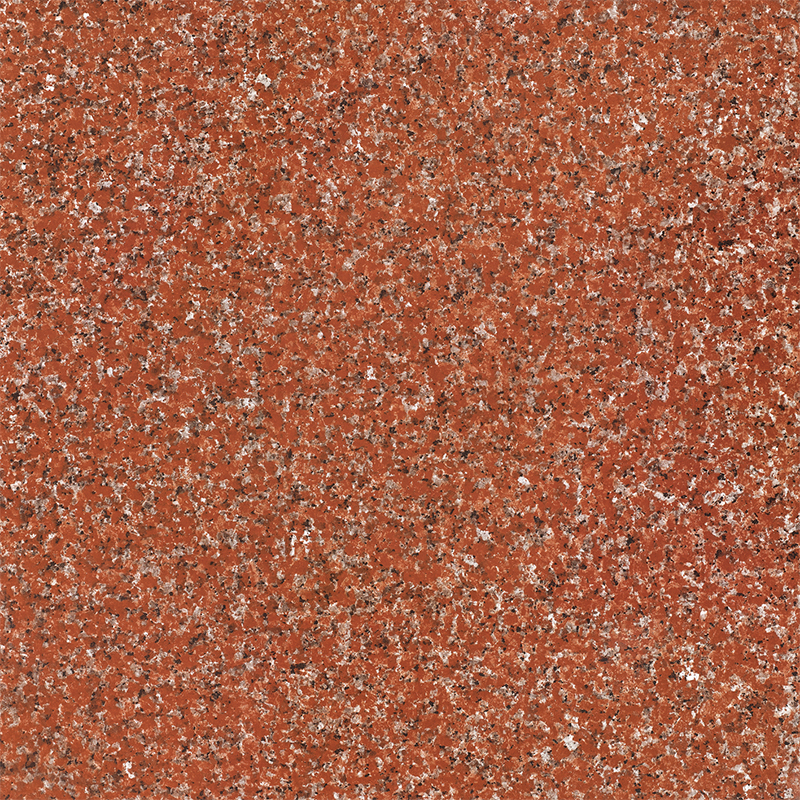How does high-grade antique brick restore the sense of history through texture?
Release Time : 2025-05-14
In modern home decoration, high-grade antique brick is favored for its unique retro style and profound cultural heritage. This tile can not only add a classical beauty to the interior space, but also cleverly restore a strong sense of history through its delicate texture design.
1. Imitation of natural weathering traces
An important feature of high-grade antique brick is that it can imitate the weathering process in nature, thus giving the brick surface a unique texture of years of precipitation. Designers have conducted in-depth research on the changes of natural materials such as stone and wood exposed to the natural environment for a long time, and extracted details such as cracks, mottled and color changes formed on the surface of these materials, and applied them to the design of antique bricks. For example, in some high-end product series, small cracks similar to those on the stone walls of ancient castles can be seen on the brick surface, or irregular spots left after erosion by wind and rain. These carefully designed textures make each brick seem to have its own story.
2. Drawing on traditional architectural elements
In addition to imitating the weathering effects of nature, many high-grade antique bricks also directly draw on traditional architectural elements from around the world as a source of inspiration. Whether it is the fine carvings of European Gothic churches or the blue bricks and tiles in Chinese classical gardens, they can all be reference objects for antique brick design. By accurately replicating the local features of these classic buildings, such as arch outlines, carved patterns, etc., combined with modern production technology, the final product not only retains the artistic charm of the original building, but also has the functionality and practicality of modern building materials. For example, the "Palace Series" antique bricks launched by some brands are based on the gorgeous murals and reliefs in the Palace of Versailles in France, recreating the glorious scene of the Baroque period in the 17th century.
3. Application of handmade craftsmanship
In order to further enhance the historical sense of antique bricks, many manufacturers also use traditional handmade craftsmanship to process the brick surface. Unlike large-scale mechanized production, handmade allows craftsmen to freely play with personal experience and creativity to create unique works. Common techniques include hand-throwing, hand-carving, and hand-glazing. In particular, the hand-glazed technology can create a color effect with rich layers and natural transitions, making the brick surface look more three-dimensional and vivid. In addition, hand-polishing can also give the brick surface subtle changes in bumps and grooves, simulating the wear marks left after years of use. This type of product with obvious artificial traces is often more attractive to consumers who pursue individuality.
4. Color matching and gradient processing
Color is also one of the key factors in creating a historical atmosphere. High-grade antique bricks usually choose color combinations that can evoke people's memories of the past, such as warm tones or neutral colors such as beige, tan, and gray-blue. At the same time, in order to better express the changes brought about by the passage of time, many products will use gradient color processing technology to present changes from light to dark in different areas of the same brick. This approach not only enhances the visual impact, but also makes the entire paving effect more harmonious and unified. For example, an antique brick series called "Ancient City Impression" uses a dyeing method that gradually deepens from the edge to the center, successfully creating a heavy feeling after the city wall has experienced vicissitudes.
5. Injection of cultural connotation
Last but not least, truly excellent high-grade antique bricks are not just simple reproductions of appearance, they often contain rich cultural connotations. This requires designers to not only have solid professional skills, but also have a deep understanding of relevant historical culture. Only in this way can the cultural essence of a specific period and region be integrated into the product, so that it can transcend the material level and become a carrier for conveying spiritual values. For example, a well-known brand launched an antique brick with the theme of the Silk Road. It not only imitates the traditional handicrafts of countries along the way in appearance, but also tells the story behind this great trade route through exquisite patterns, allowing people to feel the cultural influence while enjoying the beauty.
In summary, the reason why high-grade antique brick can successfully restore a strong sense of history through texture is inseparable from the imitation of natural weathering traces, the reference of traditional architectural elements, the application of handmade craftsmanship, color matching and gradient processing, and the injection of cultural connotations. It is the combined effect of these comprehensive factors that makes each piece of antique brick like an open history book, quietly telling the bits and pieces of the past years. Whether in home decoration or commercial space design, choosing the right antique tiles is undoubtedly an ideal solution that can show both taste and cultural heritage.
1. Imitation of natural weathering traces
An important feature of high-grade antique brick is that it can imitate the weathering process in nature, thus giving the brick surface a unique texture of years of precipitation. Designers have conducted in-depth research on the changes of natural materials such as stone and wood exposed to the natural environment for a long time, and extracted details such as cracks, mottled and color changes formed on the surface of these materials, and applied them to the design of antique bricks. For example, in some high-end product series, small cracks similar to those on the stone walls of ancient castles can be seen on the brick surface, or irregular spots left after erosion by wind and rain. These carefully designed textures make each brick seem to have its own story.
2. Drawing on traditional architectural elements
In addition to imitating the weathering effects of nature, many high-grade antique bricks also directly draw on traditional architectural elements from around the world as a source of inspiration. Whether it is the fine carvings of European Gothic churches or the blue bricks and tiles in Chinese classical gardens, they can all be reference objects for antique brick design. By accurately replicating the local features of these classic buildings, such as arch outlines, carved patterns, etc., combined with modern production technology, the final product not only retains the artistic charm of the original building, but also has the functionality and practicality of modern building materials. For example, the "Palace Series" antique bricks launched by some brands are based on the gorgeous murals and reliefs in the Palace of Versailles in France, recreating the glorious scene of the Baroque period in the 17th century.
3. Application of handmade craftsmanship
In order to further enhance the historical sense of antique bricks, many manufacturers also use traditional handmade craftsmanship to process the brick surface. Unlike large-scale mechanized production, handmade allows craftsmen to freely play with personal experience and creativity to create unique works. Common techniques include hand-throwing, hand-carving, and hand-glazing. In particular, the hand-glazed technology can create a color effect with rich layers and natural transitions, making the brick surface look more three-dimensional and vivid. In addition, hand-polishing can also give the brick surface subtle changes in bumps and grooves, simulating the wear marks left after years of use. This type of product with obvious artificial traces is often more attractive to consumers who pursue individuality.
4. Color matching and gradient processing
Color is also one of the key factors in creating a historical atmosphere. High-grade antique bricks usually choose color combinations that can evoke people's memories of the past, such as warm tones or neutral colors such as beige, tan, and gray-blue. At the same time, in order to better express the changes brought about by the passage of time, many products will use gradient color processing technology to present changes from light to dark in different areas of the same brick. This approach not only enhances the visual impact, but also makes the entire paving effect more harmonious and unified. For example, an antique brick series called "Ancient City Impression" uses a dyeing method that gradually deepens from the edge to the center, successfully creating a heavy feeling after the city wall has experienced vicissitudes.
5. Injection of cultural connotation
Last but not least, truly excellent high-grade antique bricks are not just simple reproductions of appearance, they often contain rich cultural connotations. This requires designers to not only have solid professional skills, but also have a deep understanding of relevant historical culture. Only in this way can the cultural essence of a specific period and region be integrated into the product, so that it can transcend the material level and become a carrier for conveying spiritual values. For example, a well-known brand launched an antique brick with the theme of the Silk Road. It not only imitates the traditional handicrafts of countries along the way in appearance, but also tells the story behind this great trade route through exquisite patterns, allowing people to feel the cultural influence while enjoying the beauty.
In summary, the reason why high-grade antique brick can successfully restore a strong sense of history through texture is inseparable from the imitation of natural weathering traces, the reference of traditional architectural elements, the application of handmade craftsmanship, color matching and gradient processing, and the injection of cultural connotations. It is the combined effect of these comprehensive factors that makes each piece of antique brick like an open history book, quietly telling the bits and pieces of the past years. Whether in home decoration or commercial space design, choosing the right antique tiles is undoubtedly an ideal solution that can show both taste and cultural heritage.







